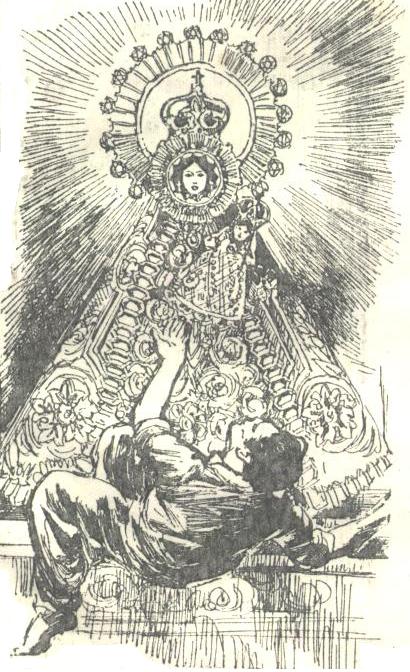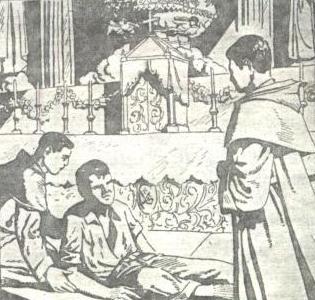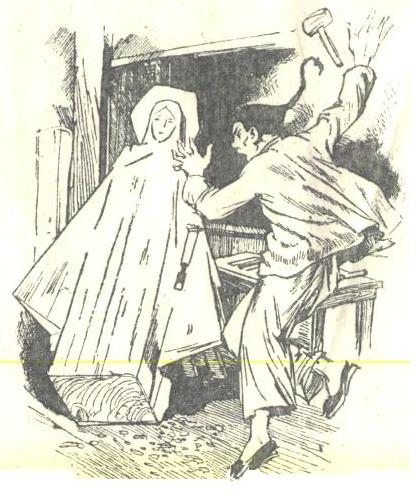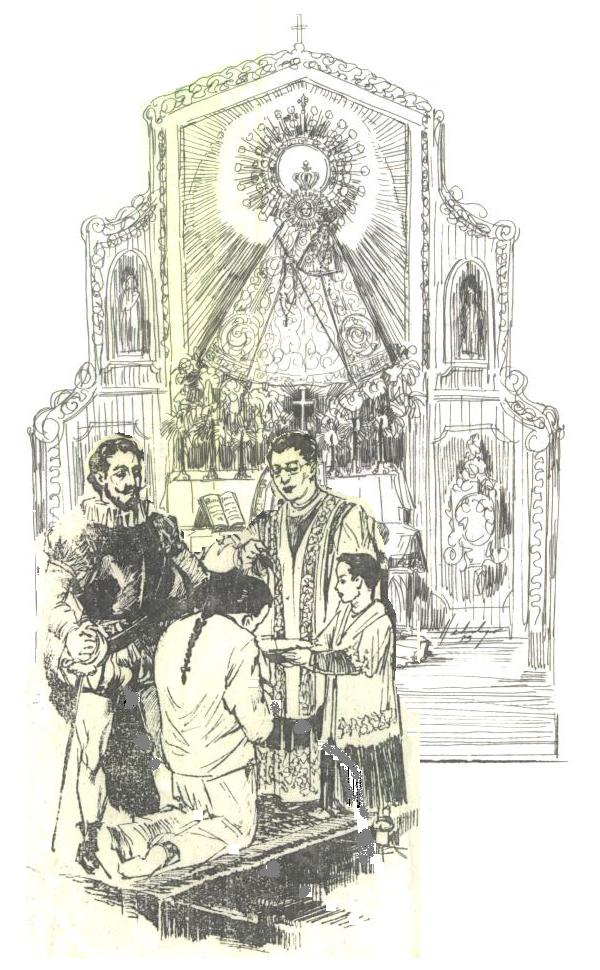There was no Dominican Father in Zamboanga, as yet, when a moro pearl-diver had confidently gone to sea one early May morning. At least, he had not heard of any.
A sturdy, bronze-sinewed fellow, he had, for sometime now, substituted his father in the family chore of fishing pearls & selling them at ridiculously low prices to support three younger brothers and two sisters.
Everybody knew him well, a veritable "chip off the old block', for this diver's father had been the best pearl fisher for miles around. Now he was perpetuating the "old man's" glories.
The day before, a bearded missionary had told him and twenty others - catechumens all - about the Santo Rosario, whose miraculous image was revered in far away Manila. He could not now recall how or why did the religious come to talk to them of that Virgin. Possibly the fact that they were now in May - the Virgin's month - or that the miracles of La Naval de Manila has just been officially proclaimed so, has moved the 'fisher of men' to talk to them, 'pearl fishers', about the Santo Rosario. At any rate, the pearl-diver wasn't so sure that morning.
It came to happen then, that our man, whilst probing the depths of the azure southern waters, caught sight of a dazzling pearl, of gigantic proportions, nestled in the softness of an open mother-o'-pearl. Now, there was some gem! he thought and quickly made for it!
As he engages himself in cutting out the ligaments that held the jewel to the recesses of the mother-o'-pearl, this suddenly closed itself, and thus caught the moro's hand!
In no time, he exerted himself vigorously to extricate his imprisoned hand. He was at quite some depth and all his violent motions brought not a ripple nor a stir to the surface of the water. He, therefore, could not expect help from his colleagues. Whatever little air was left in him was quickly being expended with the great efforts of our man to set himself free from the murderous grip of the shell. His heart beats began to falter. His strength was leaving him. The telling hue of deep scarlet was noticeable in his recoiling body.
Then, came the light! He remembered the Santo Rosario and her wonder; he recalled, La Naval, an eminently sea-victory. The Mother of God would aid those at sea, then. So, he lifted up his heart and mind to the Virgin of the Most Holy Rosary, and, in exchange of his safe release from sure death, he would go all the way to Manila and offer that pearl to Her, Queen of the Sea.
Even before he had time to fully finish his supplication, the mother-o'-pearl broke in two and he was free. Quickly he rose to the surface, where, detected by his friends, who had noticed his beleaguered face, rescued him and brought him safely ashore.
Soon the moro pearl-driver left Zamboanga. With but the missionary's letter of introduction [for he had not told anyone of the incident, but had only confided it to the padre] and the pearl, safely tucked in his waist pocket, he came to Manila and went directly to the Convent of Santo Domingo.
In sincere, if incorrect, language he appraised the Dominican Fathers of his intention and gave the Father Prior the dazzling gem. He then, led by the friars, went to the altar of the Santo Rosario, where, kneeling piously, uttered a prayer of thanks & veneration.
The Virgin must have smiled at him, for he left - back to Zamboanga - in complete bliss!
******************************
Not long after, a lowly creature hid himself in the dark recesses of the Church of Santo Domingo and waited for midnight. When the sacred place had been closed for the day, the thief - for he had come to rob Our Lady of that pearl, which everybody had already occasion to admire - stealthily made his way to the throne of the Santo Rosario. Most impiously climbing the altar, he reached the niche of the Virgin, lifted up the silken blue curtain, and extended his hand... covetingly towards the south sea pearl.
"¿Por qué me roba usted cuándo no le daño?" - Why dost thou rob me when I harm you not...?
The voice was a woman's. The thief had made sure, a few moments ago, that he was alone inside the church. And the voice came directly from the image! Our man was lost! He trembled and frightfully tumbled down, causing some commotion. But, the friars had gone to bed a long time ago and the cloisters were quite a distance away.
The early hours of the morning, saw the lay brother aghast at the sight of an unconscious man, half naked and rubbed with oil, at the foot of the Virgin's throne. The Dominican friars, having been quickly summoned, shook the man to consciousness and from him heard the wondrous tale of the Virgin's recrimination.
Since then, and following the thief's conversion, our people have had a high regard for the Virgin's jewels.
Our Lady has, thus, given ample proof that She would not betray the unsullied gratitude of that moro pearl-diver, who had come to her all the way from far Zamboanga, where, in her southern waters, "he had caught sight of a dazzling pearl, of gigantic proportions, nestled in the softness of an open mother-o'-pearl!" and had wanted it for Her, Queen of the Sea: Mary of the Most Holy Rosary!












